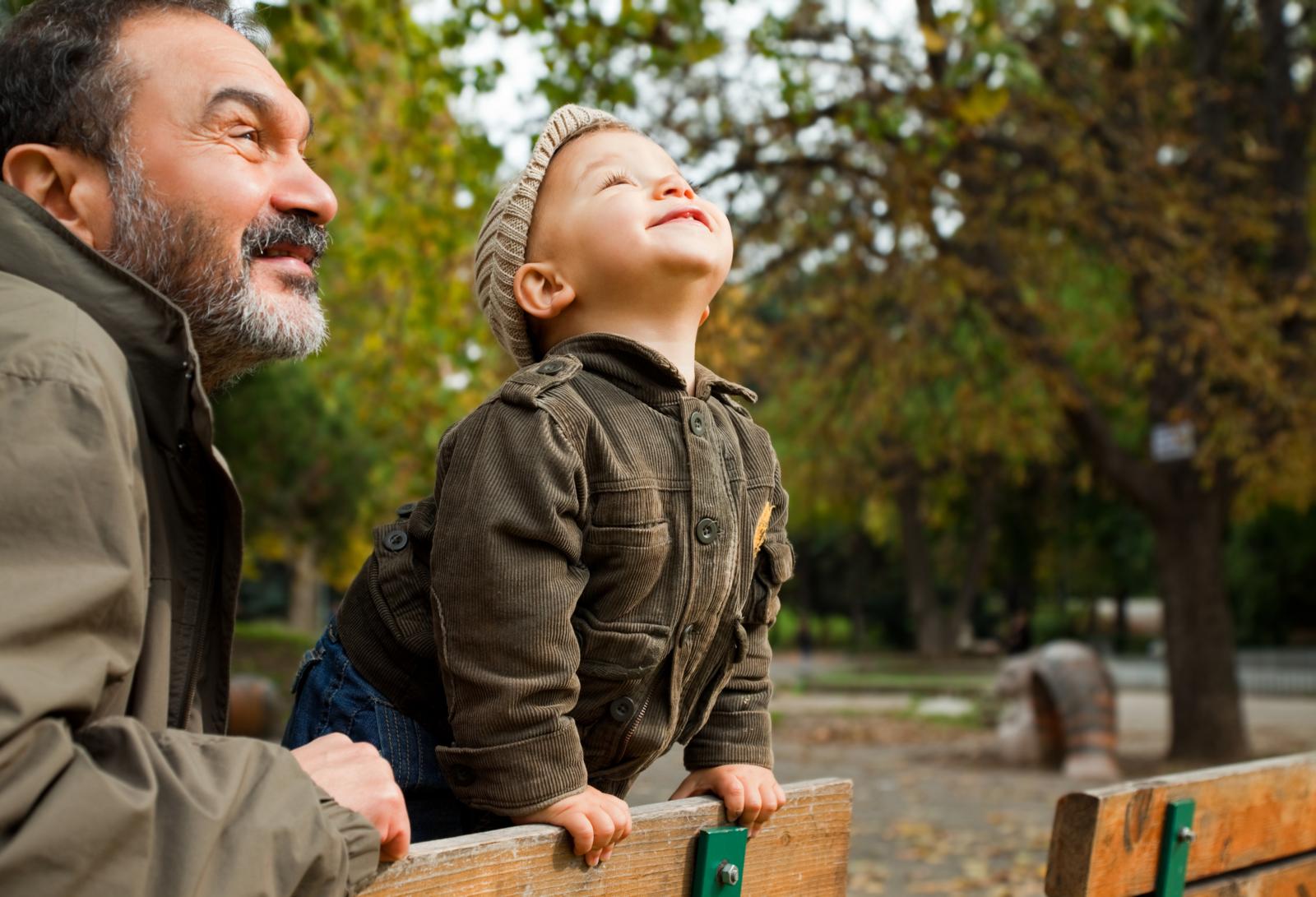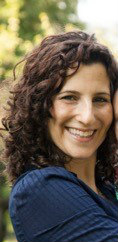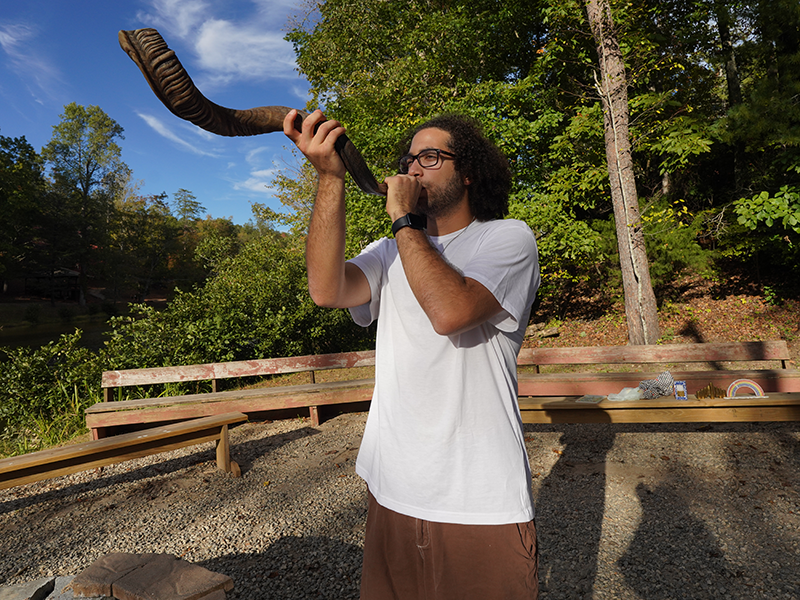
Jewish tradition reinforces the importance of saying, “I’m sorry” with the sacred observance of Yom Kippur. Yom Kippur, known in English as the “Day of Atonement,” is the culmination of our 10 Days of Awe, the period of time beginning with Rosh HaShanah and ending with Yom Kippur. It falls on the Hebrew date of 10 Tishrei, and is widely considered to be the holiest, most solemn day of the Jewish year.
Yom Kippur gives each of us the opportunity to confess our wrongdoings and atone for them. In Hebrew, this process of repenting is called , which comes from the Hebrew root meaning “to turn,” and in many ways, the process of t'shuvah is all about turning. We turn inward to see where we have missed the mark; we turn outward to dear family and friends, offering them words of remorse and reconciliation; and we turn away from bad habits and try to make better, healthier choices.
Everything we do on Yom Kippur supports the ideas of repentance, reflection, and renewal. For example, the most recognizable mitzvah (commandment) associated with this holy day is fasting. For 25 hours (we begin just before sunset on erev Yom Kippur and end just after nightfall on Yom Kippur day), we do not eat or drink. Abstaining from food allows us to focus on the most meaningful work of the day: saying we are sorry for the not-so-wonderful things we have done over the past year, and asking those we have hurt for forgiveness.
(It is important to note that fasting is not for everyone. Those who are ill or infirm; the most fragile in our communities; those who are pregnant or nursing; those who are suffering with a chronic illness or a physical, emotional or psychological condition for which fasting would not be advisable or compatible, should not fast. Neither should children fast. Children can participate in the mitzvah, however, by abstaining from certain foods or categories of food on Yom Kippur. Some children might avoid sugar cereals, for example, while others might give up ice cream or pastries for the day. These are meaningful, age-appropriate ways for children to engage with the mitzvah of fasting.)
We give up more than food on Yom Kippur. We also avoid activities that bring us pleasure, and many avoid taking a shower or bath, or applying makeup, creams, or fragrances. Tradition teaches that we aspire to be like the angels on Yom Kippur, who do not need to eat or drink or wash or play; thus, neither do we on this sacred day. It’s a mitzvah as well to avoid wearing leather shoes. One of the ideas behind this prohibition (and there are many) is that we don’t concern ourselves with luxuries on Yom Kippur.
Many choose to wear white on Yom Kippur. Some wear white clothes, while others don a white tallit (prayer shawl) both in the evening and in the morning (the tallit is traditionally worn only in the morning). White is said to be a symbol of purity, and it is also the color of the burial shroud, reminding us of our mortality, and the urgency to make amends with those we have wronged.
Worship is at the center of Yom Kippur, from the start of the holy day all the way to the end. This year, we recognize that gathering in groups in person is impossible. Congregations in every time zone will be livestreaming and offering more intimate gatherings online; find one near you. What follows is an outline of the flow of services and rituals you might expect to see in a typical year.
We begin with Kol Nidre, the haunting evening service that marks the opening of Yom Kippur and the beginning of the journey into our souls. This service contains, most notably, the Kol Nidre prayer. Although Kol Nidre itself means “all vows,” and focuses upon the extremely difficult vows we’ve made that we may not be able to keep (think about the Spanish Jews hundreds of years ago who, fearing for their lives, converted from Judaism), the significance of the prayer is far greater than its literal definition would suggest.
The music for Kol Nidre is one of the most breathtakingly beautiful chants in Jewish tradition. It is the music that makes this prayer so powerful, so memorable, and so emotional. When we hear the Kol Nidre melody, we immediately feel the sense of Yom Kippur wash over us; we feel the heartache and the sorrow, the longing and the pain. Kol Nidre primes our ears and opens our hearts to all that is yet to come.
And there is much yet to come.
When we arrive at synagogue on Yom Kippur morning, many of us plan to stay all day, through morning, afternoon, Yizkor (the service of memory for those who have died), and Ne’ilah (the closing service of Yom Kippur). One service follows directly after the other; if there are breaks, they are often filled with study sessions, lectures, or personal reflections. (Most communities also hold children’s services or family services on Yom Kippur, giving our youngest members a way to connect to the liturgy and giving families an opportunity to be together in worship.)
Two of the most important Yom Kippur prayers are the Ashamnu and the Al Cheit, which make up our Jewish confession, or vidui. During the vidui, we open our hearts and bare our souls, as we own up to the times we have missed the mark and failed our family, our friends, our communities, and ourselves. We say these prayers while standing, surrounded by the entire congregation, emphasizing that no one should be singled out for any one wrongdoing. We are all guilty of sin. We are all at fault.
And so, we ask for forgiveness in one voice, as one community.
But God is never far away from us on Yom Kippur. The words of the famous prophet Jonah, which we read on Yom Kippur afternoon, remind us that even those who have wandered furthest from the path can return, just as the “wicked” people of Ninevah made their way back to God through sincere repentance: “God saw what they did, how they were turning back from their evil ways. And God renounced the punishment God had planned to bring upon them, and did not carry it out.” (Jonah 4:10) There is hope yet for us all!
On Yom Kippur, we devote ourselves to saying we are sorry with sincerity, with honesty, and with love. It is a long, exhausting day of searching and thinking, but there is a light at the end of the tunnel. As the gates of prayer begin to close, our spirits lift in joy, knowing we have done all we can to make this coming year better than the year before. We raise our voices in song and we hear the mighty blast of the shofar for one last time during these High Holidays. Tekiah g’dolah! We turn to our family and friends and embrace one another, as we seal in the goodness for the year to come.
L’shanah tovah tikateivu! May we be inscribed for a wonderful, sweet, and meaningful new year!
Explore Jewish Life and Get Inspired
Subscribe for Emails

